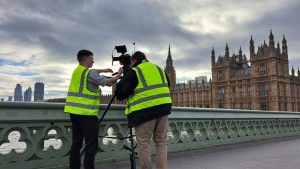Things you need to know about the day of filming.
A corporate video is only as good as the interview footage. Our Guide to the Logistics of Filming in Your Office will help you get the most for your investment. Planning logistics ahead of time will mean a smooth day of shooting. Find out what to expect, what to avoid, and how to make the most of the moment.
Duration
How long does it take to set up for video interviews?
Our call time is two and a half hours before the interview needs to start. Between parking and dropping our kit, it can take us an hour to get into some corporate buildings. Once we’re in the room, it’ll take us an hour and a half to set up the lights and pick up the shots.
How long does it take to conduct a Corporate Film interview?
Filming an interview takes about an hour.
Before filming starts, time is needed to put the interviewee at ease (most people get nervous) and tweak the lighting, setting up the mics and conducting a final sound check. Bank on 15 minutes of filming for one minute of video; for a 3 – 4 minute film, we typically interview for 45 – 60 mins. An additional 15 – 30 minutes is needed to shoot a little B-roll footage. This is the footage used for the cutaway shots that provide context and variety.
How long does it take to break down the gear?
It takes about half an hour to break down the kit and leave the building.
What location is best?
There are 3 things to consider when booking a room for filming professional video interviews: space, sound, and light.
What size room is ideal?
We need as much space as possible, usually the minimum is a boardroom that can seat 8-10 people. A good 2-3 metres is needed between the interviewer and interviewee. Most importantly, we need to be able to move furniture out of the room or to a corner to create the desired gap between interviewee and interviewer without obstructing the view. It’s often good to have a window if there is a nice view that contributes to the story, but generally we prefer to have as much control of the light as possible and so less windows is better.
Why is silence important?
Good clear sound is by far the most important aspect of any shoot. Broadcast quality recording equipment picks up ambient sounds so the location should be (very) quiet. No humming air-con, no noisy neighbours, no passing traffic, no interruptions.
What about lighting?
Even with proper lighting equipment and techniques, windows to the outside world can cause unwanted glare and shadows. If the sun is playing hide-and-seek behind the clouds, every take could end up looking different.
What is B-roll?
B-roll is the additional footage used to break up the interview or to ‘set the scene’ and provides colour and context to the footage. We usually film 15 -30 minutes of B-roll, such as the interviewee looking out of a window, at their laptop, talking to clients, smiling to camera, over the shoulder shots. We also shoot establishing shots of the company’s building, logo, signage, reception or other relevant areas relating to what the interviewee speaks about and on-location shots of surrounding location and generic footage.
We tend to use only a few seconds of each shot but they add a lot of value to the overall piece.
Check out our latest Branded Video Film Production in Newmarket where we conducted some amazing on location shoots.
How to look your best on camera
Avoid any nasty surprises when filming corporate video interviews with this handy filming do’s & don’ts checklist.
Do’s
- DO dress the way that you like to present yourself professionally, wearing clothes you know you look good in, and that make you feel great.
- DO wear solid colours, as they look great on camera and help you stand out.
- DO choose muted or pastel colours, as they are easy on the eyes and help create a calming atmosphere.
- DO wear a button shirt, blouse, V-neck polo shirt or jacket so we have somewhere to place the microphone.
- DO wear contacts rather than glasses which often create distracting reflections under TV lights.
- DO wear make-up. Men and women alike should wear light powder to avoid shining under the lights. We recommend a loose powder in your skin tone to minimize shine.
Making sure that you look your best involves a bit of coverage and having some extra makeup on hand for touch-ups. Cameras can wash out your skin, so you’ll need to add a bit more than you’d wear normally, but still tasteful.
We will always have some basic makeup on set so please feel free to ask the production assistant.
Don’ts
- DON’T wear busy, repeating patterns like herringbone, thin stripes, or small checks – they can “vibrate” on camera and distract viewers.
- DON’T wear t-shirt style shirts, turtle necks or jumpers as they make it difficult to hide the microphone.
- DON’T wear deep blacks, bright whites, or nudes, as they can cause lighting problems.
- DON’T wear bright green shirts, as they can give your skin an unhealthy-looking pallor.
- DON’T wear large areas of bright red, as they can “bleed” on camera.
- DON’T wear a bright white undershirt as it can show through your shirt under the bright lights.
- DON’T wear scarves and turtlenecks, as they can muffle your audio or rub on your microphone.
- DON’T wear excessive jewellery, especially anything that will glare in the lights or jangle noisily.
Who to inform we’re filming?
Security and Reception will need to be made aware that we are filming, to ensure we have easy access to the building on shoot day. For some companies, it is also good to notify their PR Department too.
It’s really important to warn all staff that filming is taking place as quiet in the filming area is essential, and anyone who doesn’t want to appear on film can warn us in advance.
Release Forms
Anyone or any location that will be on the film needs to have a signed a Release Form. Our production team will share one with you and we will make sure we have all the permits required.
On Location Permits
Generally, if we are filming in a town or city we will require various permits from the local County Council or from the owners of any private land. There is often a cost associated with any permit requests. Our most recent film was shot on Westminster Bridge in Central London, we were required to gain permits to film on a Double Red Line route from Transport for London and from Westminster Council to film on the roadside paving.
Our production team will ensure all permits are catered for and all rules for example wearing high visibility vests are adhered to.
How long should I schedule for filming?
An ideal schedule would for one interview would be something like this:
8:30am–9:30am: Arrive on site, access through reception and bring our kit into the building. Park van (if necessary) and get to the interview room.
9:30am–11:00am: Set up the room with lights and sound.
11:00am-11:30am: Break (our crew needs a break, its a lot of hard work setting up and to be fresh ahead of the interview filming)
11:30am-12:30pm: Call Time – first interview – if there is a second Interview on the same day allow 40 minutes between each interview, plus 30 mins for B-roll.
12:30pm-1:00pm: B-roll
1:00pm–1:30pm: Finish filming, get kit out of the room
2.30pm – Kit packed into van, reception access keys returned, depart.
Remember, the interviewee does not need to be present for the entire set-up process and we will communicate the exact call time required for them to be ready for the interview.
How to find out more about video interviews
For help with creating your own professional corporate video, get in touch today.
Agile Ability believes that film is the essence of digital communication. It’s the digital marketing differentiator that’ll help your business grow, develop and succeed. And it doesn’t have to cost the earth.
Let’s chat about how to include video interviews in your corporate video.

